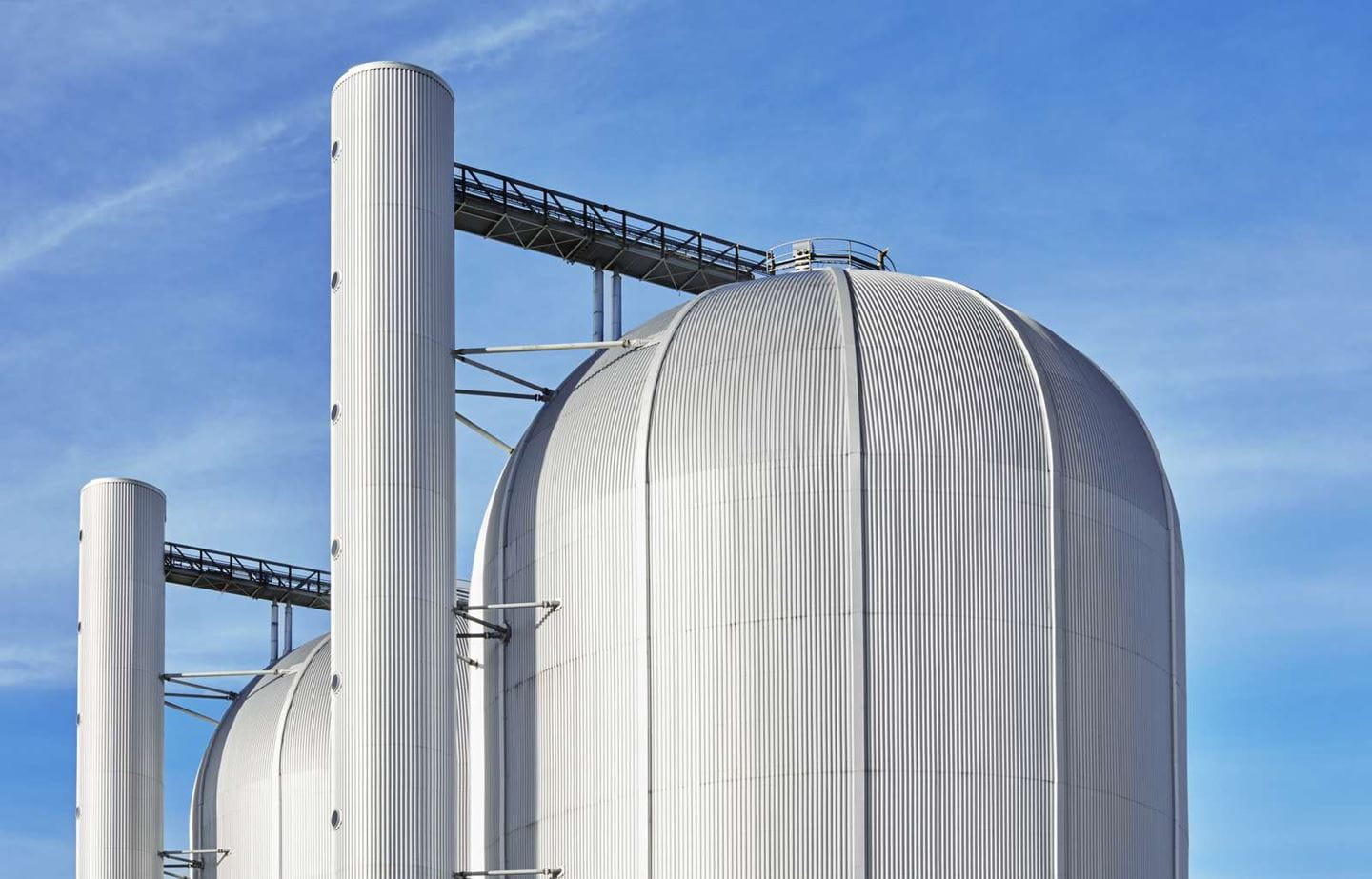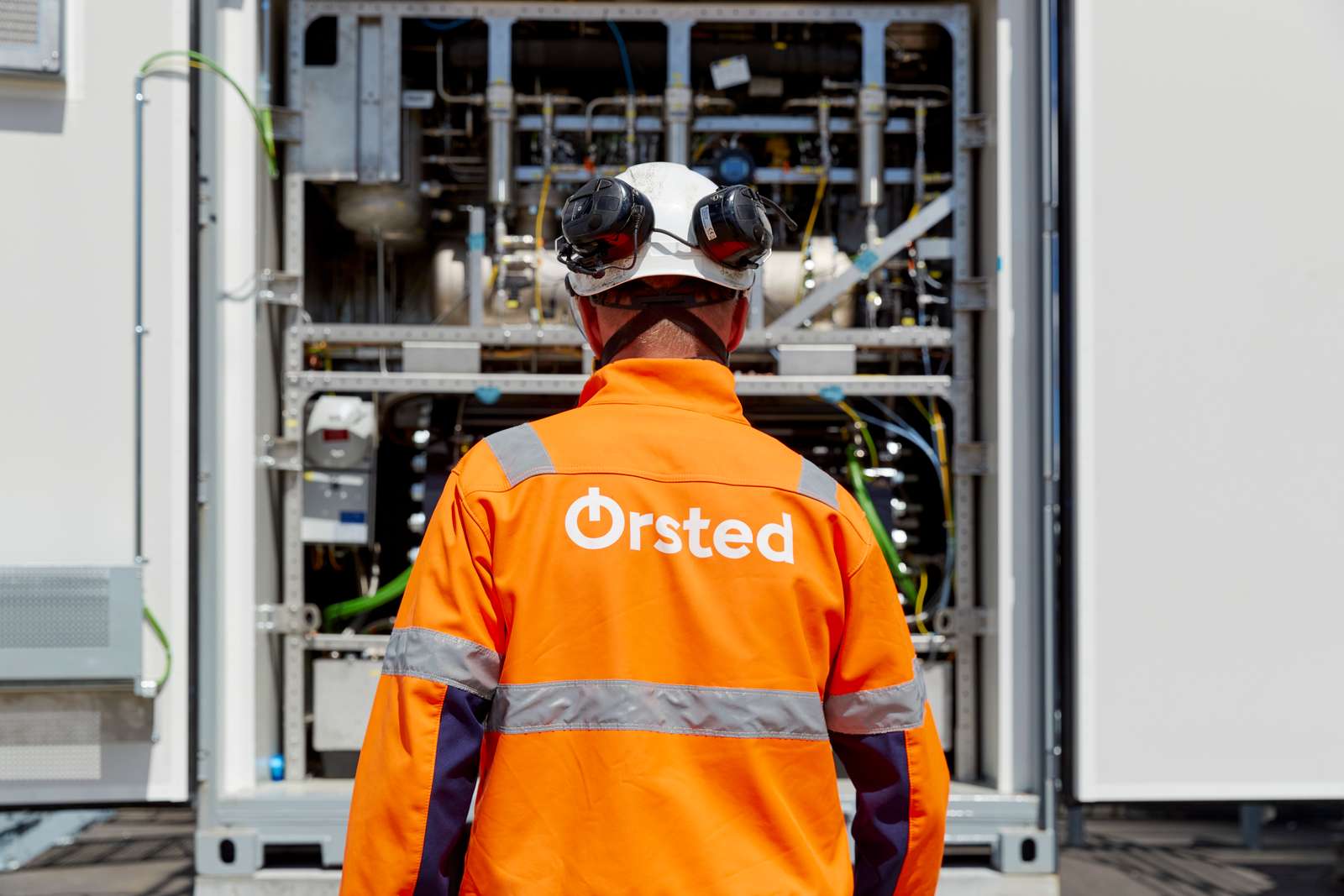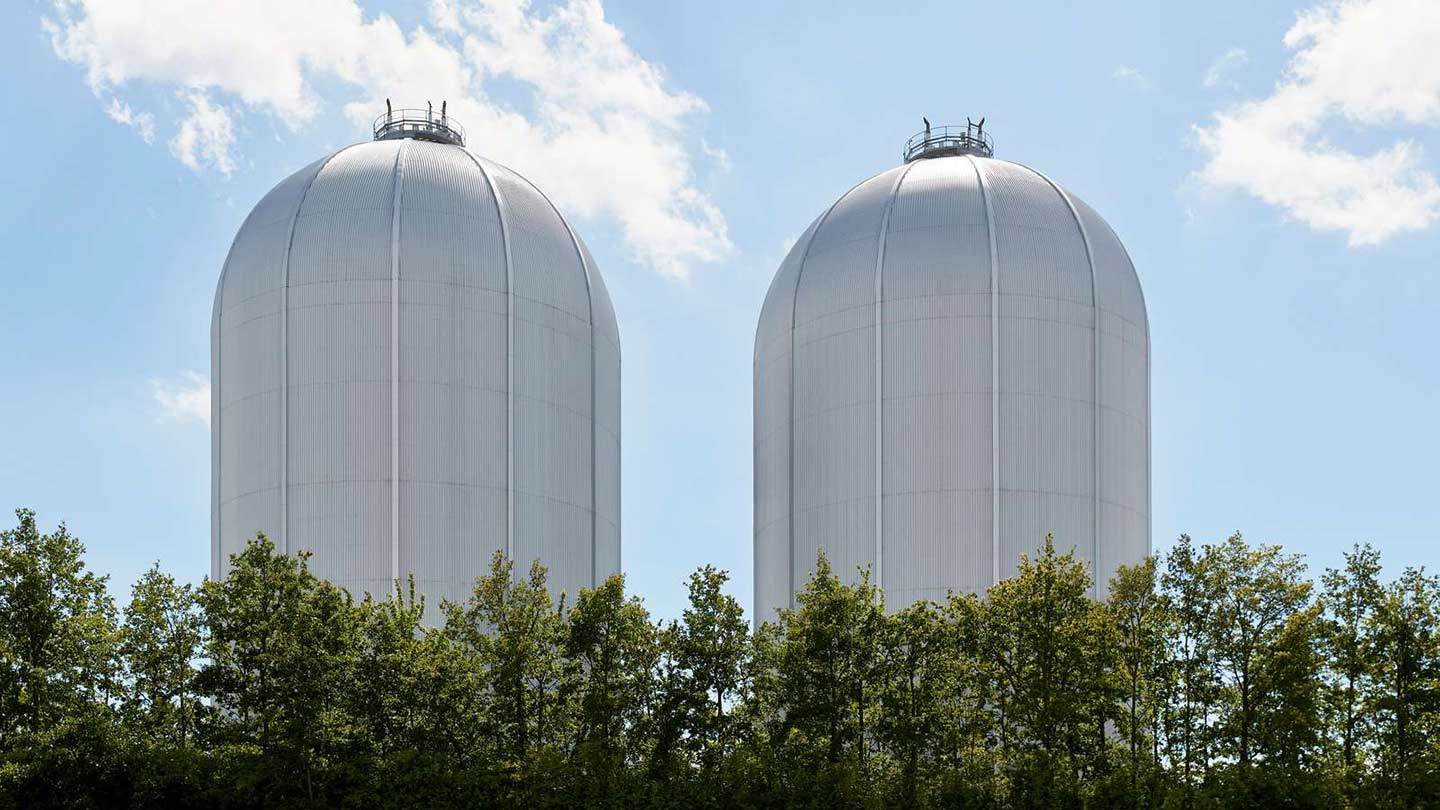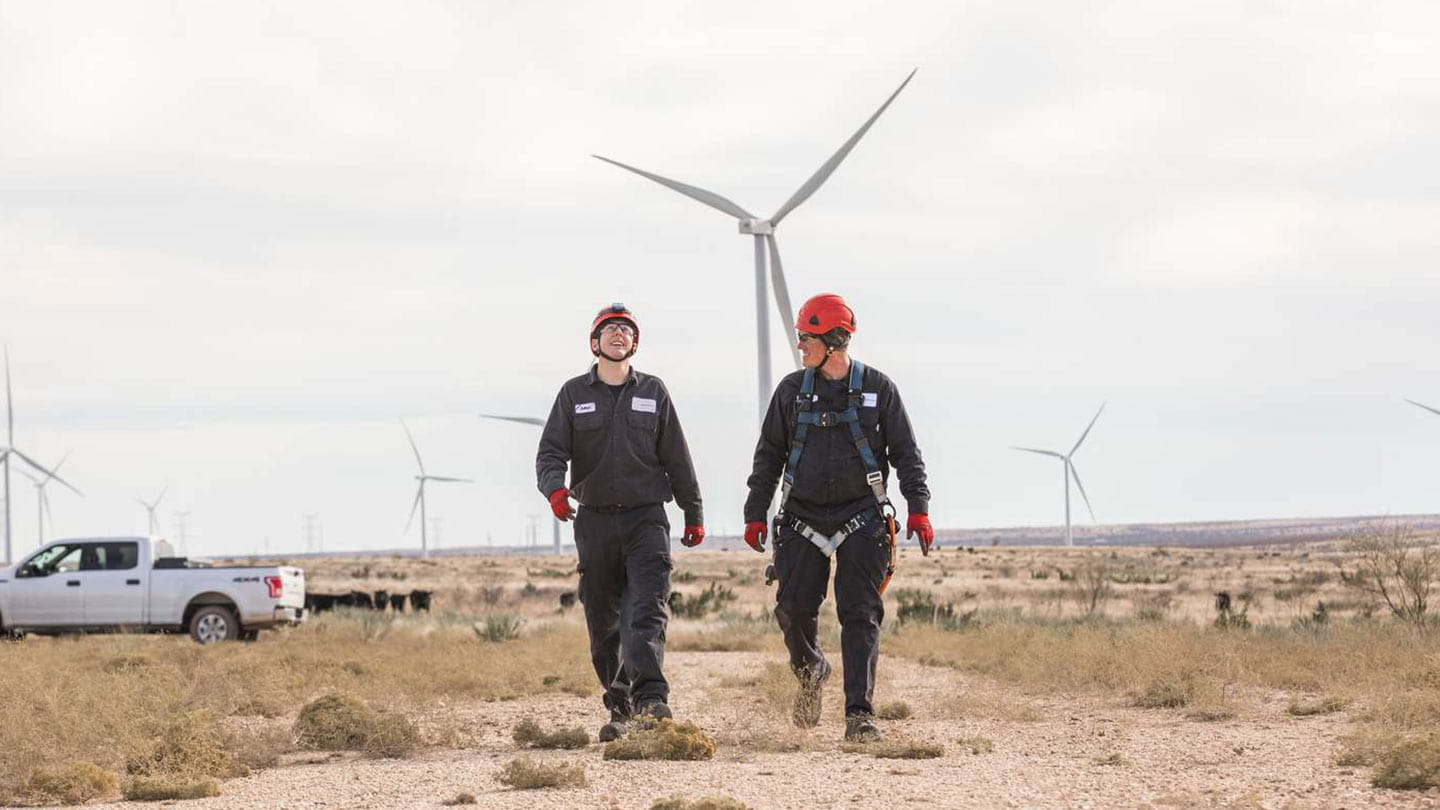Power-to-X (P2X)
Decarbonizing American industries with green hydrogen and e-fuels
The United States has officially entered the clean hydrogen market. This growing industry is key to decarbonizing some of America’s heaviest industries, through the use of either green hydrogen or its derivative e-fuels (e.g., e-ammonia, e-methanol).
As a leading clean energy company, Ørsted is using our extensive portfolio of wind and solar assets to power P2X facilities. We’re developing a green hydrogen and e-fuels project in the U.S., and supporting the development of one of America’s first clean hydrogen hubs.









